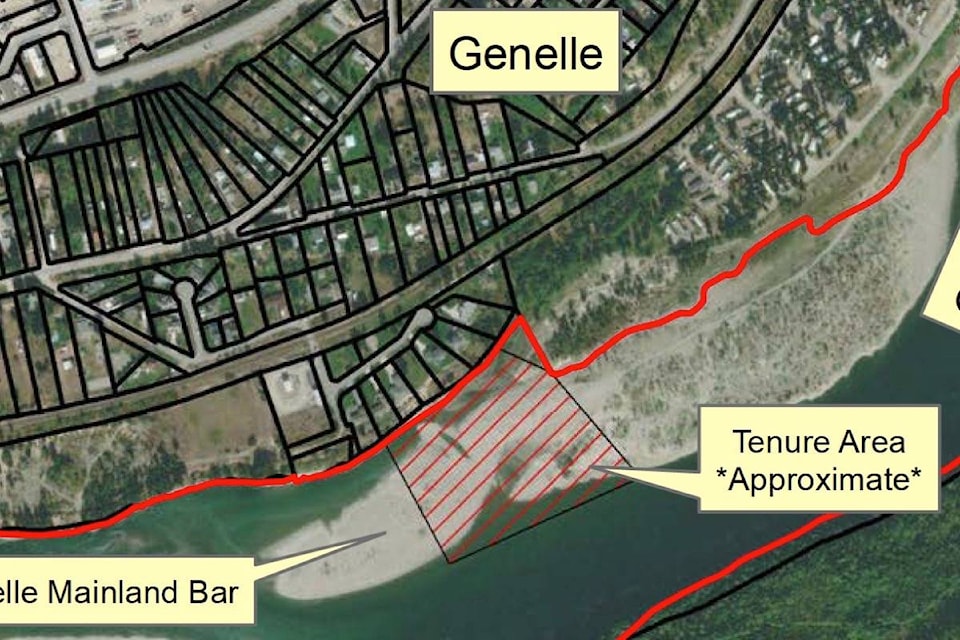Steps are underway to make a clear path for fish getting trapped in the main sand bar near Genelle.
BC Hydro has been ordered by the Comptroller of Water Rights to undertake physical re-contouring where fish are being stranded on the Columbia and Kootenay Rivers.
Once stakeholders are informed and in agreement of the project scope, work will begin when river levels are at their lowest, usually early spring and fall.
“This is in direct relation to the fluctuating water levels over time creating an increase of buildup material in the Genelle Mainland Bar,” explained Area B Director Linda Worley.
“As a result, recurrent fish stranding is taking place at various river stage changes in the bar.”
The issue was passed to the Area B Planning Committee for comment, the concern being the recent land accretion by the Whispering Pines Mobile Home Park - the existing boat ramp and access to the proposed work area are no longer crown land, it is now part of the privately owned mobile home park.
The Genelle Mainland Bar is identified for monitoring under the Lower Columbia River Fish Stranding Study. In a ministry report, the site is described to benefit from re-contouring due to recurrent fish stranding at various river stage changes, the large abundance and diversity of fish that are commonly found in this area of the river, and the changes to morphology that have taken place since the last re-contouring that was done 14 years ago.
“The contouring project is important, as it will restore this area to where it was in 2003 when the first re-contouring was done,” said Worley.
“This work will provide a healthier environment for existing fish, and result in a higher survival rate for the future with prevention of low waters and high bar levels trapping fish during fluctuation periods.”
Once the work begins, likely this fall, travellers on the highway along the Genelle Bluffs will notice work being done in the area,” Worley noted.
“As well as residents of Genelle who have a view of that portion of the river. There could be increased traffic for the proposed five days of work,” she added.
“In my opinion this work along Columbia River is important to protect the fish and to maintain the ongoing health of this beautiful and productive world class fishing destination.”
Under the Water Sustainability Act and the Utilities Commission Act, the Comptroller of Water Rights (Ted White, Water Management Branch), assisted by staff in the Utility Regulation Section, is responsible for the regulation of 122 privately owned water utilities serving approximately 20,000 households in British Columbia.
A private water utility under the Water Utility Act is a person/business, in this case BC Hydro, who owns or operates equipment or facilities for the delivery of domestic water service to five or more persons or to a corporation for compensation. Private water utilities are generally created by developers to serve rural land development where community water service is required for subdivision approval and where there is no other water purveyor in the area that can provide service.
Private water utilities are regulated to protect the public interest. They are regulated to ensure that adequate and safe water service is provided at a fair and reasonable price. Water rates are approved on the basis of collecting sufficient revenues to pay for operating costs, including a provision for management fees and a contribution for future replacement of infrastructure.
